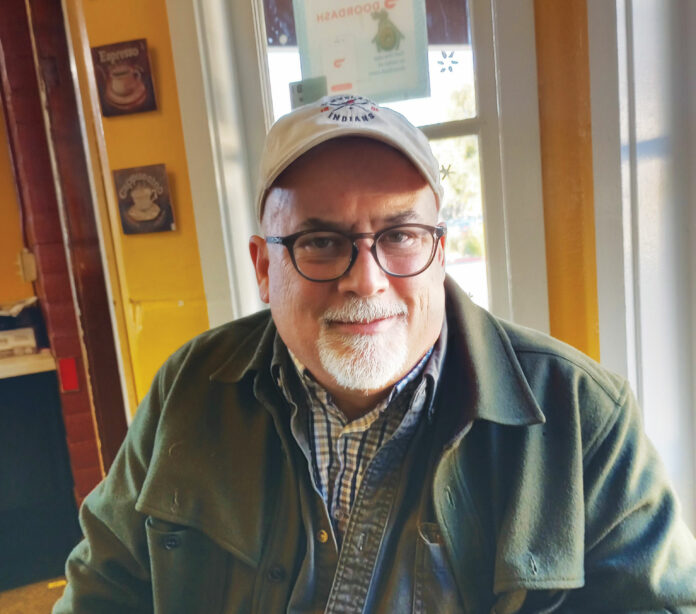
Just as Bay Area gasoline prices have finally dipped below the $4 a gallon line at select stations, after rising above $7 a gallon at some pumps this summer, home-heating costs are rising.
However, as the icy breath of winter nips at the necks of Santa Cruz Mountains residents—with electricity rate hikes menacing homeowners—energy companies are suggesting ways for consumers to turn up the savings.
Of course, the pandemic and the war in Ukraine have had a huge impact on markets, but PG&E has also promised $55 million in payouts for the 2019 Kincade Fire and 2021 Dixie Fire, and around $13.5 billion for a 2018 Camp Fire settlement, notes Sandbar Solar & Electric.
The Santa Cruz company says PG&E has increased prices by around 21% for Tier 1 customers and 17% for Tier 2 customers, compared to 2021.
Unsurprisingly, it suggests moving away from fossil fuels for your energy needs.
“If you install a solar system, it may be possible to reduce the amount of electricity you purchase from PG&E so that you only pay the lowest Tier 1 rates,” the company states on its website. “It makes financial sense to secure your energy independence and produce your power rather than buying it from the utility.”
You can’t just flip the switch on that kind of change, but there are other things you can do to deal with the pinch, experts say.
Sandbar suggests sealing crawl spaces, allowing leftovers to cool for half an hour before putting them in the fridge and cleaning out dryer ducts as more immediate options.
PG&E says using LED Christmas lights instead of incandescent bulbs will reduce costs.
“LED lights are 75% more energy efficient and can last up to 40 holiday seasons,” a spokesperson said. “Use decorations that don’t require energy like wreaths, ribbons, ornaments or garland.”
The utility says many large lawn ornaments will cost you about $10 to $15 each over the holiday season.
“Reduce the number of inflatables,” the spokesperson said, adding, “Use a timer to turn off lights before going to bed.”
Aaron Berndt, head of energy industry partnerships at Google Nest, told the Press Banner their smart thermostat helps people save an average of 10% to 12% on their heating bill.
“Nearly every utility that we’re talking to has increased prices,” he said, adding automatic features on traditional thermostats might not be saving you as much as you think. “The challenge is that, for most people, they will set the thermostats up once and effectively never set them again.”
Google reports saving its thermostat users across the country $50 million, last year.
“Heating prices are rising significantly because of the natural gas crisis,” said Berndt, who promises that Google won’t sell this intimate information it collects about the interior of your home or use it to target you with ads. “It won’t solve everything in terms of the heating crisis, but it will help drive meaningful bill reductions for customers in a low-cost and easy-to-install way.”
The system is convenient because it integrates with other Internet of Things devices from Google, so you can tell your smart speaker to turn up the heat or to cool things down, he added.
Mike Guilbert, a 57-year-old engineer who works in the Scotts Valley area, has heard the calls to cut back before—and frankly, it bugs him.
That’s because he says he’s already doing his part.
“I’ve always been conserving,” he said, while drinking a specialty coffee at House of Bagels in the Kings Village Shopping Center. “It’s upsetting to me when a person of authority in the government or a CEO is saying, ‘Hey everyone. We’ve all got to collectively conserve.’ And I throw my hands up, and I say, ‘How?’”
He learned an important lesson about conservation as a boy growing up in Scotts Valley during the drought years of 1976-77. His mom taught him to only use water when necessary.
Guilbert says he’s already conscious of the temperature at his house.
“You want to cut 10% off your energy bill? Here’s what you do: you can turn down the thermostat of your hot water heater. You don’t need to make water that’s 160 degrees. You can make water that’s 120 degrees,” he said. “I think people leave the house with their heater on and they don’t think about it, because it’s just not that much money.”
Guilbert—who doesn’t have a smart thermostat—says it’s strange to him that Google wants to collect so much data on its customers, but he says he isn’t too bothered by it.
“I don’t understand what it is that they’re going to learn from us,” he said. “If Google wants to mine data through my thermostat at home, OK.”












It would be more effective if PG&E offered home audits that advised homeowners targeted advice on what would be most effective for a specific home.